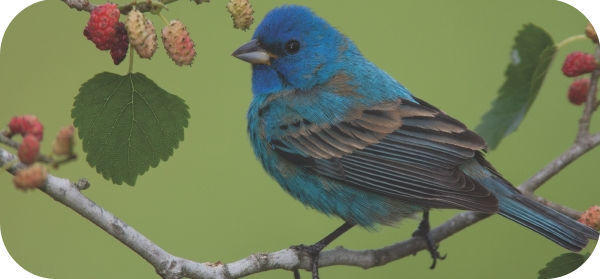
Indigo Buntings
Indigo Buntings are a special sight here in High Point, North Carolina. Indigo Buntings spend the summer months with us, but we are most likely to see them during their migration to and from their wintering grounds in Southern Florida, Mexico, and Central and South America. Often called "blue canaries", the male Indigo Buntings are a vibrant blue, although their feathers aren't actually colored blue! Their feathers refract light in such a way that they appear blue, much in the same way that Blue Jay and Bluebird feathers appear so distinctly colored. This is also why their feathers can almost appear iridescent in the sunlight. Females and juveniles are brown, and resemble a sparrow in size.
Indigo Buntings are most likely to be seen near woodland edges and weedy fields hunting for insects. They do also eat seeds and berries and can sometimes be spotted on backyard bird feeders offering Nyjer, seed blends, suet or mealworms. Indigo Buntings migrate at night and use the stars to help guide them. Researchers demonstrated this process in the late 1960s by studying captive Indigo Buntings in a planetarium and then under the natural night sky. The birds possess an internal clock that enables them to continually adjust their angle of orientation to a star—even as that star moves through the night sky.

